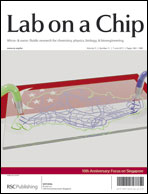Pressure drop of slug flow in microchannels with increasing void fraction: experiment and modeling
Abstract
Pressure drop in a gas–liquid slug flow through a long microchannel of rectangular cross-section was investigated. Pressure measurements in a lengthy (∼0.8 m) microchannel determined the pressure gradient to be constant in a flow where gas bubbles progressively expanded and the flow velocity increased due to a significant pressure drop. Most of the earlier studies of slug flow in microchannels considered systems where the expansion of the gas bubbles was negligible in the channel. In contrast, we investigated systems where the volume of the gas phase increased significantly due to a large pressure drop (up to 1811 kPa) along the channel. This expansion of the gas phase led to a significant increase in the void fraction, causing considerable flow acceleration. The pressure drop in the microchannel was studied for three gas–liquid systems;


 Please wait while we load your content...
Please wait while we load your content...